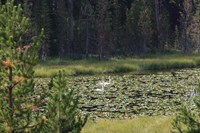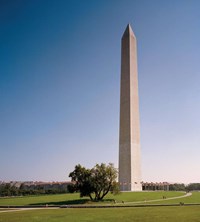Showing 72 results for thje ...
- Type: Person

Charles Cornwallis, 1st Marquess Cornwallis and 2nd Earl Cornwallis, served as a British general during the American Revolution and notably surrendered his army to General Washington's Continental army and the allied French forces at Yorktown, Virginia in October 1781. This surrender effectively ended hostilities between British and American forces and led to peace negotiations, ending the war and recognizing American independence. Cornwallis later governed in India.
The Tympanum (triangular area above the entrance of the memorial)
- Type: Article

In this education activity for 7th-12th grade, students examine the inscription on the northeast interior wall of the Jefferson Memorial and compare it to the primary source documents from which it is quoted, the Virginia Statute for Religious Freedom and a letter from Jefferson to James Madison, written a decade later. Students explore how context affects their understanding of the text and are invited to write their own inscription using the same text.
- Type: Article

Do the inscriptions in the Jefferson Memorial represent Thomas Jefferson's beliefs and philosophies? In this education activity for 8th-12th grade, students will compare an inscription in the memorial to an earlier draft, and to the original text of the Declaration of Independence. They will analyze how shortening or editing a quotation can change its meaning. To extend the lesson, they will compose their own suggestion for an inscription in taken from the Declaration.
- Type: Article

Have you ever been misquoted or had your words taken out of context? In this introduction to the Jefferson Memorial Education series for 8th-12th grade, students learn about the Thomas Jefferson Memorial Commission and are introduced to the selection process for the inscriptions on the chamber walls. Then they will begin to consider how editing a quotation can change its meaning. How does the design of a memorial affect how a person is remembered?
- Type: Article

The inscription on the northeast wall of the Jefferson Memorial is a conglomeration of words and sentences pulled from five different sources. Does it accurately represent Thomas Jefferson's beliefs about slavery and liberty? In this education activity for 8th-12th graders, students will compare the inscription with the primary sources and analyze the meaning of the quote in context and then compose their own inscription. How should the memorial present slavery?
- Type: Article

In this education activity designed for 9th-12th graders, students compare an inscription in the Jefferson Memorial with the primary source text. How does the full context affect your understanding of Jefferson's argument? Students consider Jefferson's suggestion that each generation should have a chance to amend the state constitution, as well as his ideas for how to "collect voices" of the people. What changes would you make? How do you get your voice heard?
George Mason Memorial
- Type: Place

In front of you a statue of George Mason holds a book by Cicero, a Roman politician and orator. Mason used ideas from Cicero and others to write the Virginia Declaration of Rights in May of 1776, the first document to protect individual rights in the United States. The document served as inspiration for the Declaration of Independence written weeks later.
- Type: Place

Thomas Jefferson (1743-1826) was the third president of the United States, Secretary of State in George Washington's cabinet, and the author of the Declaration of Independence. Begun as a New Deal construction project, the Thomas Jefferson Memorial was completed in 1943. The imposing marble structure's columns and Monticello-esque dome bear selections of Jefferson's writings on several themes including religion, education, freedom, and government. Additional exhibits and rest
Wolf Lake Trailhead
- Type: Place

This trailhead in the middle of the park provides access to a series of trails:- Wolf Lake- Ice Lake Trail- Howard Eaton Trail: Cascade Lake-Norris CampgroundParking is on the south side of the road and the trailhead is on the north side. Use caution when crossing the road. Wolf Lake Trail This 2.4-mile (3.9-km) there-and-back trail travels through forests and swampy meadows on its way to meet up with the Howard Eaton Trail: Cascade Lake-Norris Campground. The highlight of th
Lost Lake Trailhead
- Type: Place

This trailhead is located at the end of the Pretified Tree Parking Lot. It provides access to the following trail:- Lost Lake TrailParking is at premium at this location, though there also is a high turn-over rate in vehicles. Additional, or winter-time parking can be found in a large pulloff along the Grand Loop Road at the entrance to the parking area. Lost Lake Trail This moderate 2.8-mile (4.5-km) loop trail begins behind Roosevelt Lodge and traverses through forest to th
The Kosciuszko House
Simon Parker Hanscom
- Type: Person
A journalist and reformer, Simon Parker Hanscom served in the 1850 Boston Vigilance Committee.
Anhinga Trail
- Type: Place

The famous Anhinga Trail is a self-guiding pavement and boardwalk trail winding through and over sawgrass marsh and freshwater slough. A paved path leads you along the water and to a looping boardwalk, providing views into the prairie and the clear waters of the slough. You may see alligators, fish, turtles, anhingas, and many other birds, especially during the winter, when the generally lower waters of the dry season concentrate aquatic wildlife in the slough. This is one th
Sarah Rittenhouse Armillary Sphere
- Type: Place

The memorial to Sarah Louise Rittenhouse (1845-1943) is an armillary sphere on a marble pedestal. She is considered the founder of Montrose Park in Georgetown and is given credit for saving the park area from a housing development planned in the early 1900's. This memorial was a gift from the Georgetown Garden Club and was dedicated in 1956.InscriptionsIn Tribute toSarah Louisa Rittenhouse1845-1942Through Her VisionAnd Perseverance ThisLand BecameMontrose ParkAn etching on th







